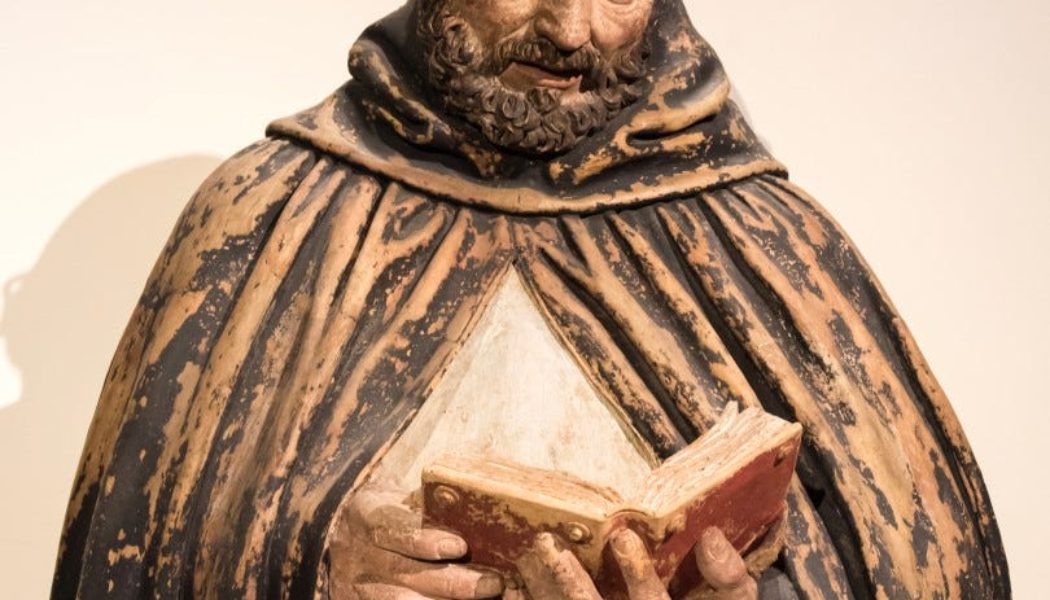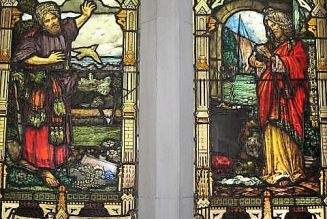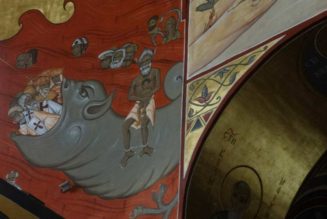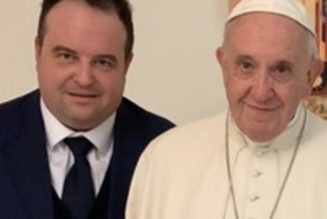Hey everybody,
Today is the feast of St. Dominic, the founder of the Order of Preachers, and you’re reading The Tuesday Pillar Post.
I have the great good fortune to know a lot of Dominican priests and sisters — and it’s my observation that Dominicans are close by whenever good things are happening in the life of the Church.
But it turns out that I don’t actually know very much about St. Dominic — most of my knowledge of the early Dominican order centers around St. Thomas Aquinas, the great saint who was born just four years after Dominic died.
It also turns out that mine is not an uncommon problem. Chesterton observed that St. Francis — that OTHER medieval mendicant — is “the easiest saint to understand and love,” but that St. Dominic is “the most difficult.”
Well, here are some things to know about St. Dominic:
— While the official papal preachers of his day traveled from city to city in luxury, with caravans of sumptuous food and fine clothes, Dominic walked barefoot from city to city, in witness to his own penitence, and a witness to his solidarity with the poor.
— While Dominic is known as a preacher, his preaching was sometimes deeply personal. There was, for example, the night St. Dominic, tired from traveling in the south of France, stayed at an inn where the innkeeper turned out to be a Catharist — a kind of medieval gnostic. So, although he was tired, and mostly needed to hit the hay, Dominic stayed up until dawn talking with the man — accompanying him, if you will — until sometime in the early morning hours, the innkeeper felt confirmed in the faith, and returned to the practice of orthodox Catholicism.
—When he died in 1221, Dominic had no cell of his own, as he spent his life traveling to preach the Gospel, and to form the hundreds of men who had flocked to the Order of Preachers. He died in another friar’s bed, and wearing a borrowed habit, because the only one he owned was completely worn out.
In short, Dominic loved poverty, loved evangelization, loved the Church, and loved Jesus Christ. I found this short essay, from Fr. Patrick Mary Briscoe, O.P., a good read on the “difficult saint to love.”
Whether you love him, or you know very little about him, St. Dominic is one of the great ones — and the order he founded has formed some of the most interesting saints, scholars, and evangelists in the Church’s history — with probably a couple of scoundrels in there too.
May he intercede for each of us.
The news
World Youth Day concluded Sunday — and if you weren’t there, the best way to get a real sense of the event is through the daily dispatches of The Pillar’s Filipe d’Avillez, who did awesome work as our World Youth Day correspondent.
Filipe’s daily dispatches have interviews with pilgrims and organizers, great slices of the World Youth Day experience, and background on the pressing questions emerging during the event.
Don’t miss the final two dispatches:
From Aug. 7, notes on the final vigil, a possible World Youth Day miracle, and the emerging plans for the next World Youth Day, to be held in Seoul in 2027.
We’re already at work on in-depth reporting on the claim of a possible miracle at World Youth Day — keep your eyes peeled for that. And we’re looking at just how to cover the liturgical controversy which emerged during World Youth Day — namely, the overnight reservation of the Blessed Sacrament in large plastic tubs ahead of the final Mass, a move which has generated a lot of discussion about reverence and the reservation of the Eucharist.
I’ll refrain from offering a view on that precisely because we’re aiming to cover it — if we can offer something useful — with more journalistic reporting.
But in the meantime, I hope you’ll read all the World Youth Day coverage from our correspondent in Portugal, Filipe D’Avillez, who brought you smart, insightful, insider reporting every day of World Youth Day — and is still at work doing follow-up coverage.
And subscribers — that’s what we can do when you support the work of The Pillar: work with terrific local journalists around the world to cover the life of the Church with smart, informed, engaging, and Catholic reporting. Keep it up.
—
Big issues in the life of the Church require big solutions. But for most Catholics, the locus of the Christian life is the parish — which is why we’ve been running a recurring “solutions” series, focusing on covering seriously the practical projects undertaken at parishes across the country — most of them aimed at building a parish community, at the practical “nuts and bolts” of evangelization, or at strengthening families.
In the latest installment of our parish “solutions” series, journalist Laura Loker looked into how a Tennessee parish ‘Buy Nothing’ group is helping parishioners to support each other’s tangible needs, and to live Catholic social teaching.
Fr. David Carter said the group has helped parishioners build “networks” between “people who have” and “those who need.” That, he said, “completes the circle of charity in a very easy and convenient way.”
Here’s the deal — a parish project like this takes not much time to get started. But at Sts. Peter and Paul Basilica in Chattanooga, Tennessee, it’s had a real impact.
“We are more attentive to each other’s needs and also attentive to the goods that we have available to share,” Fr. Carter said.
—
Pope Francis appointed earlier this month the Slovakian Catholic Archbishop Cyril Vasil’, S.J., to serve as papal delegate to the Syro-Malabar Catholic Church, which is embroiled in a liturgical dispute that makes America’s liturgy fights look pretty small by comparison.
This liturgical dispute, readers of The Pillar know, has involved burning a cardinal in effigy, melees in a sanctuary, lots of police involvement, and a cathedral shuttered by police order.
Well, I suggested last week that Archbishop Vasil’ will not have an easy time meting all that out.
And indeed, the problems have started already. While the archbishop wrote a letter to be read on Sunday at all Eucharistic liturgies in the Syro-Malabar Church, most parishes in the Major Archeparchy of Ernakulam-Angamaly declined to read it aloud.
Again: Archbishop Vasil’ went to India with the full authority of the pope, and told priests that they had to read his letter out loud during the liturgies.
They said no.
It’s not an auspicious start to his work, and it suggests that this dispute will almost certainly continue to escalate until the pope starts doling out ecclesiastical penalties for refusing pastors — and even that might not be enough to see them accept his liturgical direction.
There’s been a lot of discussion in Western media about the prospect of schism in Germany. But is the real prospect for a major schism playing out in India’s Syro-Malabar Church?
Luke Coppen brings you the latest.
Since that visitation began, there has been a lot of speculation in the media that Pope Francis might be planning to soon suppress the group.
In an analysis this week, I took a look at that idea — and to my way of thinking, it doesn’t add up. The Holy See has invested years, with senior Vatican personnel, in effecting a kind of reform process for the SCV — and it seems unlikely that after commissioning a lot of man-hours devoted to the project, the pope would suddenly decide to suppress the entire institute.
While there are a lot of serious questions about the SCV, the reports about its likely suppression seem to me improbable. I do think the Holy See might formally dismiss Figari from the institute — a move most advocates think should have happened already.
Of course, that doesn’t mean that the intended reforms have actually been accomplished — there are competing narratives about whether the SCV is really changing, or whether it’s telling Vatican officials what they want to hear. That issue is critically important, and there is more work to be done on reporting it — on both abuse, and on financial questions raised in South America.
And if the SCV seems — in critical ways — to parallel the scandal-plagued Legionaries of Christ, well, that may point to its future, and to the Vatican’s apparent belief that scandal-plagued institutions, founded by abusive but charismatic figures, can eventually be reformed.
Whether that’s true for the Legion and the SCV remains to be seen.
But here’s an initial look at the most recent visitation.
—
Finally, a story I very much enjoyed reporting yesterday and this morning:
The group gets a chance to talk about its work to a Sunday congregation, and Father Pastor gets a chance to go on vacation when he can’t find coverage.
And according to documents recently obtained by The Pillar, Cross Catholic Outreach uses a surprising market research tool to assess how those priests are doing — it dispatches “mystery shoppers,” hired through a third party, who listen to homilies, and report back.
While that’s super interesting in itself — and the reporting is worth reading — let me tell you what happened after we published this report this morning:
The Pillar’s reporting noted that the “mystery shopper” ad did not require that secret shoppers in the pews be Catholic, and it did not offer any guidance about the Church’s norms on the Eucharist — meaning that non-Catholic secret shoppers might have received Holy Communion during their visit, without knowing what they were doing, and what the Church teaches.
Well, soon after the story was published, Cross Catholic Outreach contacted us, to let us know that secret shopper directions will now instruct “mystery shoppers” to observe the Church’s discipline and doctrine regarding Holy Communion while they were at Mass.
Not a bad outcome, if you ask me.
Balloon harpoons
DARPA, the Pentagon’s Defense Advanced Research Projects Agency, has launched a new project called CAPTURE (Capturing Aerial Payloads to Unleash Reliable Exploitation), which aims to find ways to successfully catch high-altitude Chinese spy balloons floating 75,000 feet above the earth.
Earlier this year, the U.S. shot down such a balloon after it flew over U.S. airspace, but the Pentagon is willing to shell out several millions if a company can demonstrate an early prototype of a balloon-capturing device.
The device can’t detonate the balloon — or at least can’t scatter its pieces — and has to be able to capture it at altitudes that very few military aircraft can reach. One balloon expert suggested that a high-tech harpoon might be the best option, which bursts the bag, and then deploys a parachute to allow its safe descent.
We’ve got to build that harpoon. I mean, is there any better project for America to rally around? In my view, we need a new John F. Kennedy moment, promising us an awesome balloon harpoon by the end of the decade, and putting America’s top harpoon nerds to work.
America needs this balloon harpoon. Now more than ever.
I’m telling you all this because I think the balloon wars are the most interesting part of contemporary geopolitical spycraft.
But it’s worth noting that as the Pentagon is hunting the skies for more balloons, and as we’re all tuning in to watch a whole bunch of political fights, China has infiltrated both Japan’s most sensitive defense computer networks and the Secretary of Commerce’s inbox, and Chinese and Russian military vessels are jointly patrolling waters pretty close to the Aleutians.
Of course, the Pentagon can obviously walk and chew gum at the same time. But I’ve told you already my working theory that the spy balloons were a bit of sleight-of-hand distraction.
Still, I’m sure it’s probably fine.
The Secretary of Commerce, by the way, is 10 heartbeats from the presidency, if you were curious. I was, so I looked it up.)
—
Here’s an excellent primer from American jazz historian Ted Gioia on a cool subject: How to take notes.
Enjoy — I think St. Dominic would really like it.
And here’s my pal Sister Mercy, SV, making her solemn profession on Saturday. Thanks for praying for her:
Please be assured of our prayers, and please pray for us. We need it.
Yours in Christ,
JD Flynn
editor-in-chief
The Pillar
Comments 18
Services Marketplace – Listings, Bookings & Reviews














